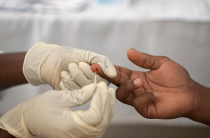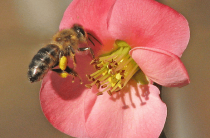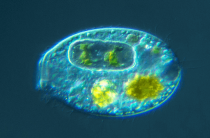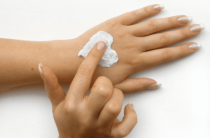Allergy to the sun is a violation of the immune system, during which an increased sensitivity of the body to those components that are produced when ultraviolet radiation hits the skin is formed. This also includes other pathological reactions that occur when ultraviolet radiation hits the skin.
Allergy to the sun can make life very difficult for the sufferer, since its symptoms may include extensive and painful skin lesions, abscesses, blisters, or manifestations of urticaria. Injured areas of the skin can become foci of infection and in this case, it will be much more difficult to treat them. An allergic reaction to the sun's rays is scientifically called "photodermatitis". Every year this disease affects more and more people. First of all, children under 3 years old, pregnant women and people with fair skin are at risk. Why is this happening?
The answer to this has long been known to modern science. Children's skin is very delicate and sensitive, which is associated both with the very properties of children's skin, and with the fact that the child's immunity has an excessively strong sensitivity in the process of formation. The same can be said about pregnant women, whose immune system, taking care of the baby, is on high alert. As far as people who have light skin tones are concerned, people with this phenotype are simply not designed to withstand the scorching sun. People with fair skin are more resistant to cold than to summer heat, therefore, countries with a hot climate are not the most comfortable place for them.
Types of sun allergies
- Cases of phototraumatism. As we know from the school physics course, any light radiation is accompanied by heat. Naturally, solar radiation is no exception to this rule. The sun's rays have a thermal effect on the skin and under certain conditions can cause a burn. What are these conditions? First, of course, this is exposure to the sun during periods of peak solar intensity (11-16 hours); secondly, it is a daytime tan, accompanied by immersion in water; thirdly, it is a provocation of skin irritation before contact with the sun's rays;
- Toxic exposure to sunlight. This phenomenon can be observed under certain circumstances: taking certain foods (carrots, celery, parsley, figs, citrus fruits), taking certain medications, applying tattoos, piercings.
- Actually, allergic reactions to metabolites that are formed in the human body during reactions that occur under direct exposure to sunlight.
Substances that cause allergies to the sun
There are natural and synthetic substances that cause skin sensitivity to sunlight. In science, these substances are often called photosensitizers. These substances can enter our body in different ways: in a place with food, medicines or get on the skin while walking. And so, what substances provoke an allergy to the sun?
- Chlorinated and salt water is the water of pools, as well as seas and oceans. It has an irritating effect on the skin, which manifests itself, among other things, by increasing photosensitivity. In no case should you sunbathe after immersion in sea or chlorinated water. Also keep in mind that water itself, acting on the skin like a lens, which focuses and enhances the sun's exposure.
- Tattooing, piercing, as well as any other cosmetic surgery that involves a violation of the integrity of the skin can cause an increase in skin sensitivity.
- The use of certain drugs, the list of which includes, but is not limited to: female contraceptives (cortisol and its analogues), antibiotics, antidepressants. Read the instructions carefully, as many drugs can cause an increase in photosensitivity.
- Plant pollen can also in some cases provoke photosensitivity. If you plan to stay in the sun for a long time, then refrain from walking in parks, forests and meadows.
- Cosmetics and perfumes contain an abundance of skin irritating substances that provoke photosensitive reactions when they get on the skin. In particular, this applies to para-aminobenzoic acid, alcohol and various essential oils.
- Tobacco and alcohol use. These substances, in addition to the usual negative impact on health, also negatively affect human immunity, which inevitably weakens in the fight against toxic agents.
What does photosensitivity look like?
The main thing that allows you to determine the reaction of an allergy to the sun is a causal relationship between exposure to sunlight and the appearance of an allergic reaction. Symptoms of sun allergy are manifested by skin changes that become noticeable in the range from 20 minutes to several days. Naturally, places of increased danger are all kinds of resorts in hot countries, as well as open areas in the summer. Also, in the diagnosis of photodermatosis, the presence of provoking factors plays an important role, which the doctor establishes with the help of a detailed survey of the patient, identifying possible harmful effects, as well as the presence of concomitant drug therapy.
Sun allergy has the following symptoms:
For photodermatitis, the most common symptom is urticaria. This disease, or rather the symptom, looks like spots, a flat, slightly raised shape, which has a pinkish tint. There are several manifestations of this disease: acute - proceeding relatively quickly, from several days to a week. There is also a chronic form with a long course, which is characterized by the presence of less pronounced symptoms, with a protracted course. This form practically does not occur with allergies to the sun.
In addition to urticaria, with allergies to the sun, in addition to urticaria, there are also cases of blisters, small ulcers, a rash that looks like acne. With phototraumatization, burns also often appear, the shape and size of which depends on the duration of exposure to the sun, as well as the intensity of solar contact.
The skin of the patient, in the dreams of the appearance of photodermatosis reactions, is prone to itching or soreness. If you feel itchy, then try not to scratch the place of contact, as this only leads to an increase and spread of dermatological manifestations.
In some cases, dermatological reactions may extend beyond exposure to sunlight. This often occurs with true allergies. During phototraumatization, this does not appear, since sunburns are local in nature.
Negative effects of sun allergy symptoms
Allergy to the sun looks unpleasant from an aesthetic point of view, which causes significant psychological discomfort to the patient.
Even if it does no other harm. Allergic manifestations are often painful, and are also accompanied by itching, which makes them extremely unpleasant for the patient.
Dermatic manifestations of allergies carry a potential danger for infection, as they are often accompanied by various violations of the integrity of the skin.
These reasons explain why sun allergy requires treatment and prevention, which should be given enough time. Alas, people suffering from sunlight should not make mistakes in terms of sun exposure hygiene, specialized nutrition and other important points, which we will talk about a little later.
Allergists and dermatologists treat allergies. It is recommended to contact these specialists at the first manifestations of an allergy to the sun.
Sun Allergy Prevention
Preventive measures, compared with the direct treatment of complications, have significant advantages in terms of safety. This is due to the fact that even highly specific and modern drugs carry a certain degree of threat, which is expressed in side effects. In addition, cases of drug allergies and other adverse events that accompany medication are not uncommon.
Prevention measures:
- You should not be under the open sun in the intervals from 11 am to 4 pm. At this time, solar radiation is truly merciless. Rare people can be at this time of day under the direct rays of the sun and not get burned;
- Minimize the use of cosmetics, as well as household chemicals, in order to avoid additional provoking factors;
- Refrain from taking alcohol and tobacco, as they depress the immune system, which can respond to exposure to sunlight with excessive sensitivity;
- Children under the age of 3, as well as pregnant women, are generally not advisable to be outside during the daytime, in summer or in a hot resort, as they are at risk for solar allergies;
- Eat a sufficient amount of vitamins and minerals, especially strong activity, in the work of immunity I take vitamins of group B, vitamin C, vitamin PP, as well as minerals: potassium, magnesium, zinc.
- Do not forget to drink at the first manifestations of thirst, because dehydration of the body interferes with the normal process of sweating, which protects the skin from drying out, and also serves for thermoregulation;
- People with fair skin need to take care of the protection of the skin during solar activity.
- Do not eat carrots, celery, parsley, cilantro, tomatoes, figs, as they provoke an increase in the sensitivity of the skin.
- Carefully read the instructions for the drug if you are undergoing drug therapy, since many drugs provoke skin photosensitivity;
- Try not to use synthetic fabrics. Such fabrics interfere with normal skin respiration, cause irritation, increase skin susceptibility and promote the accumulation of bacteria.
Help with sun allergies
- Even if at first the allergy to the sun looks like harmless spots, you should immediately take cover in the shade. In no case do not stay under the open rays of the sun;
- The patient needs to take plenty of clean water to replenish the moisture lost in the sun;
- Do water compresses on damaged areas of the skin;
- After providing first aid - immediately consult a doctor;
- Creams "Rescuer" and panthenol are well suited against burns, as well as aloe juice, which is applied to the places of manifestation of solar reactions;
- Use protective dressings made from natural fabrics that do not tightly fit the skin
sun allergy treatment
And so, if preventive measures were ignored, or did not have the desired effect, then therapeutic treatment is necessary, which is based on the removal of symptoms. In the treatment of allergies, much attention is paid to drugs that have a local effect: sprays, creams, ointments and gels. This is due to the peculiarities of the symptoms, which are manifested by skin disorders, in which it is necessary to use local remedies both to soften the skin, in order to prevent drying out and inflammation, as well as to relieve the symptoms of allergies directly.
Antihistamines
Antihistamines (diphenhydramine, diazolin, claritin, erius, etc.) are used to relieve allergy symptoms. With an allergy to the sun, which looks like hives or dermatitis, they help eliminate itching, swelling of the skin, prevent inflammatory processes, eliminate rashes of various nature, and relieve irritation. Antihistamines differ in the following parameters: side effects, frequency of use, active dosage of the active substance, the time it takes for the therapeutic effect to unfold, as well as the speed at which the active substance reaches its maximum concentration. Therefore, at the moment there are a large number of drugs that are used taking into account the severity, tolerability, as well as the general state of health of the patient.
Side effects:
Weakness, feeling of lethargy and drowsiness (diphenhydramine, tavegil, suprastin, astemizole);
Feeling of dryness in the oral cavity, nausea, tachycardia (demidrol, tavegil, suprastin);
Violation of the cardiovascular system (claritin, cyterizin, ebastine);
Liver and kidney disorders (desloratidine)
When choosing antihistamines, the following indicators are also taken into account: age, pregnancy and lactation. These data have a significant impact on the choice of drugs.
The most effective way to use antihistamines is to use them well in advance (3-5 days) before likely contact with the allergen.
Please note that antihistamines are effective only for true allergy to the sun, they are not effective for the traumatic nature of the disease.
Cestine (active ingredient: ebastine) acts only on type 1 histamine receptors (which are responsible for the development of allergic symptoms), does not affect other systems of hormonal regulation, which makes it a highly specific drug with a low incidence of side effects. Ebastin is not able to enter the neurons of the central nervous system, therefore it does not cause a depressing effect. The therapeutic effect develops within an hour after administration and lasts for 2 days.
This tool is highly effective for relieving allergic symptoms, manifested in the form of dermatitis, has a pronounced effect on eliminating itching, flaking and skin irritation. It is not recommended for use in patients with hypokalemia, as it has a depressing effect on the work of the potassium-sodium channel in the heart muscle.
Cyterizine is a highly selective histamine H1 receptor blocker that affects both the early and delayed phases of an allergic reaction. Suitable for the treatment of allergic manifestations in children. It shows high efficiency in removing the dermatological manifestations of an allergic reaction. Despite the statements provided by the manufacturer, it has an inhibitory effect on the central nervous system, but weaker than that of first-generation drugs.
Claritin is a drug with a high affinity for histamine H1 receptors, due to which it has high efficacy and safety parameters. Well eliminates various dermatitis, including those with allergies to the sun. In general, the use of this drug seems to be the most justified, in most cases, with various allergy symptoms. Compatible with antifungal drugs, and can also be used in pediatric practice.
Sun allergy ointments
Symptoms of an allergy to the sun look like manifestations of urticaria, or a burn. Its only manifestation is a skin reaction, for the removal of which it is advisable to use corticosteroid and anti-burn drugs.
Panthenol is a highly effective remedy against burns. Its active ingredient - pantothenic acid accelerates healing, with burns, as well as allergic and inflammatory processes. After application, absorption by the skin occurs instantly, which contributes to the rapid development of the therapeutic effect.
Panthenol must be carefully and evenly applied to damaged areas of the skin, several times a day. Keep in mind that panthenol is often available in the form of a spray bottle. This means that in no case should you spray it near a source of open flame!
Cortisone ointment is a powerful, anti-inflammatory drug that also has an allergy-neutralizing effect. Belongs to the class of hormonal corticosteroid drugs. Its use is indicated for severe forms of sun allergy. Prolonged and thoughtless use can disrupt local immunity, which will create fertile ground for the development of fungal infections that require additional treatment.
Please note that this article is only a source of information and is prepared as a reference material. It is not a teaching aid for the treatment of allergic diseases. This right belongs exclusively to qualified specialists in the field of allergology and other medical fields (if necessary).
[perl] mosquito bite allergy [/perl]















